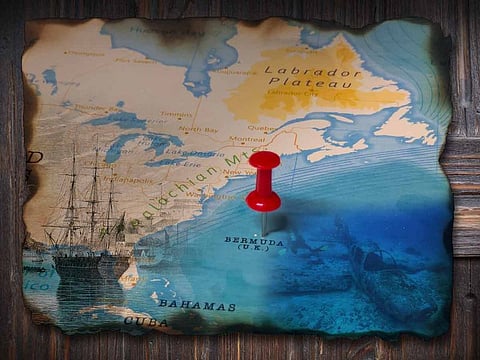The Bermuda Triangle: The truth behind the myths about vanishing ships and planes
The area sparked conspiracy theories, inspired countless books, articles and documentaries

The Bermuda Triangle has fascinated and terrified the world for nearly a century. Unexplained disappearances of ships and planes have fuelled conspiracy theories for decades, and inspired countless books, articles, and documentaries.
Is the stretch of the Atlantic Ocean between Miami, Bermuda, and Puerto Rico actually dangerous? Not at all, says Australian scientist Karl Kruszelnicki. The US National Oceanic and Atmospheric Administration (NOAA) agrees. Both maintain there’s no mystery at all.
Here’s a look at the Bermuda Triangle, the events that gave rise to the legend, and the truth behind the myths.
What is the Bermuda Triangle?
The Bermuda Triangle is a region of the North Atlantic Ocean roughly bounded by Miami, Bermuda, and Puerto Rico. It has a vaguely triangular shape, though it doesn't appear on official world maps. According to Britannica.com, it includes parts of the southeastern US coast, Bermuda, and the Greater Antilles (Cuba, Hispaniola, Jamaica, and Puerto Rico).
How did it get its name?
The term “Bermuda Triangle” was first used in 1964 by writer Vincent Gaddis in a Argosy magazine article. He described it as a region that had “destroyed hundreds of ships and planes without a trace.”
How did the mystery begin?
The legend of the Bermuda Triangle stems from a series of high-profile disappearances — especially those involving US military craft, often without any wreckage or clear explanation.
In 1918, the USS Cyclops vanished while travelling from Brazil to Baltimore. Twenty-seven years later, a squadron of US Navy torpedo bombers — Flight 19 — was lost during a training mission. Again, no wreckage was found.
Over the last century, more than 50 ships and 20 aircraft have reportedly gone missing in the region. Sensational media coverage — especially Gaddis’s article and Charles Berlitz’s bestselling 1974 book The Bermuda Triangle — amplified the idea of a supernatural phenomenon.
What are the popular myths?
Supernatural explanations range from alien abductions and time-space warps to lost Atlantis technology and mysterious energy fields. Berlitz even linked the disappearances to the fabled island of Atlantis. Movies, books, and TV shows have only helped keep these theories alive.
But scientists and insurance companies have never subscribed to these ideas.
Is the Bermuda Triangle really dangerous?
In reality, the Bermuda Triangle does not have an unusually high number of disappearances. Wreckage is often lost quickly in the vast ocean, giving the illusion of mystery.
According to Britannica.com, a 2013 World Wildlife Fund (WWF) study found the Bermuda Triangle isn’t even among the world’s 10 most dangerous waterways. Kruszelnicki has echoed this view since at least 2017, telling The Independent that the number of incidents in the Triangle is proportional to the heavy traffic through the area.
Insurer Lloyd’s of London and the US Coast Guard have shared similar views since the 1970s.
What really causes the disappearances?
Modern science and safety protocols offer more grounded explanations:
Violent weather: The Gulf Stream current can cause sudden weather shifts and rough seas.
Navigational challenges: The complex geography of islands, reefs, and shallow waters makes navigation difficult.
Compass anomalies: The Bermuda Triangle is one of the few places on Earth where compasses may point to true north instead of magnetic north, causing potential confusion.
Human error and equipment failure: Poor navigation, mechanical issues, and insufficient forecasting play major roles in many incidents.
What are the recent findings?
According to Vocal Media, investigators have uncovered a lot of data that debunks the myths:
Shipwreck remains: Over 300 shipwrecks have been documented near Bermuda’s coral reefs, typically due to natural hazards.
Aircraft debris: In recent years, debris from several crashes has been recovered, disproving the idea of planes vanishing “without a trace.”
Treacherous weather: The region is prone to hurricanes, rogue waves, and waterspouts — all capable of sinking ships or downing aircraft.
Navigational hazards: Strong currents and shallow waters add to the risk.
Magnetic anomalies: While compass readings may be affected, it’s a known and natural phenomenon — not unique to the Bermuda Triangle.
The power of myth
The Bermuda Triangle was never truly a mystery. It’s a compelling example of how myth, mystery, and media can shape public imagination. Unpredictable weather, human error, and the allure of the unknown combined to create one of the most enduring legends of the modern era.
Sign up for the Daily Briefing
Get the latest news and updates straight to your inbox







